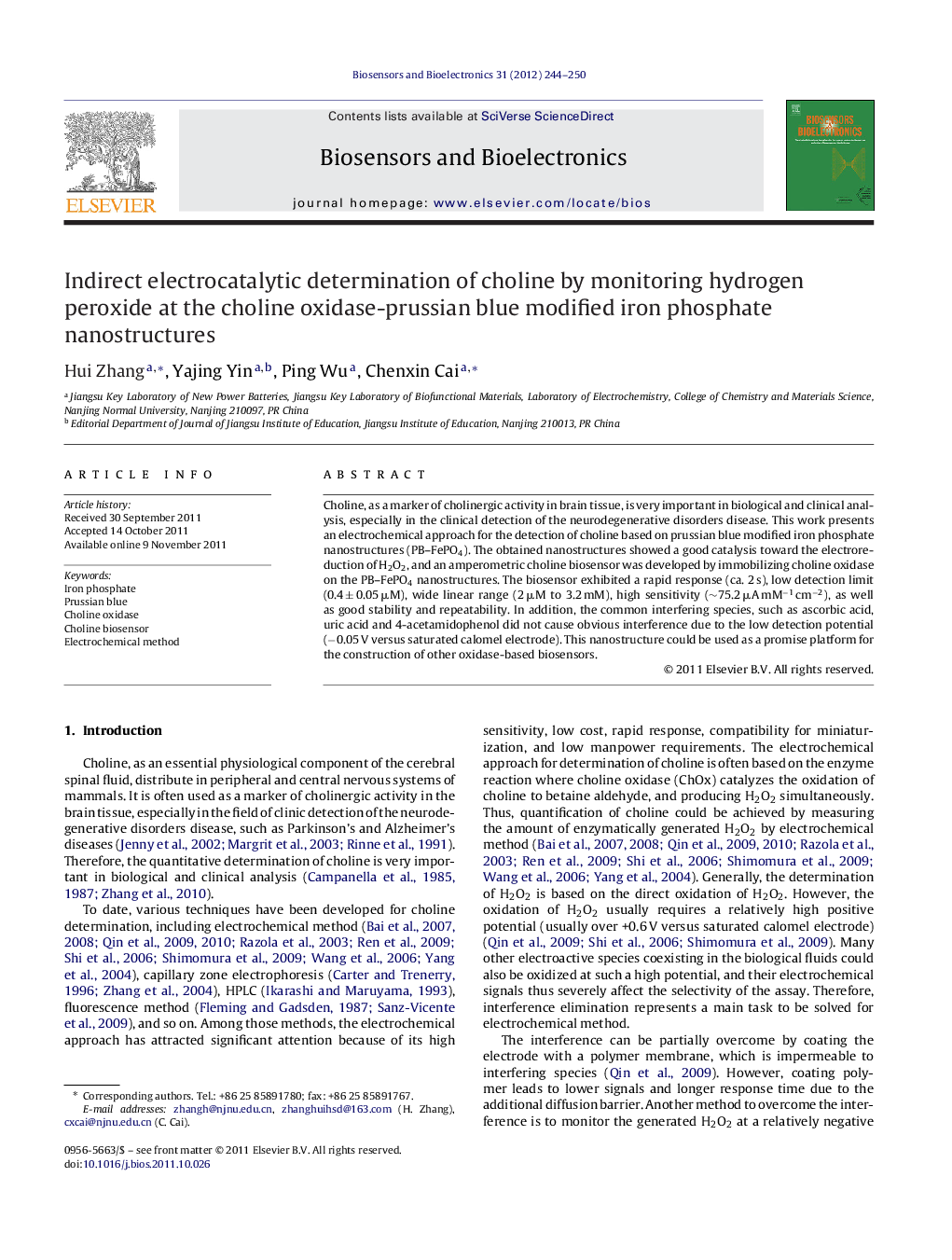| Article ID | Journal | Published Year | Pages | File Type |
|---|---|---|---|---|
| 10429347 | Biosensors and Bioelectronics | 2012 | 7 Pages |
Abstract
Choline, as a marker of cholinergic activity in brain tissue, is very important in biological and clinical analysis, especially in the clinical detection of the neurodegenerative disorders disease. This work presents an electrochemical approach for the detection of choline based on prussian blue modified iron phosphate nanostructures (PB-FePO4). The obtained nanostructures showed a good catalysis toward the electroreduction of H2O2, and an amperometric choline biosensor was developed by immobilizing choline oxidase on the PB-FePO4 nanostructures. The biosensor exhibited a rapid response (ca. 2 s), low detection limit (0.4 ± 0.05 μM), wide linear range (2 μM to 3.2 mM), high sensitivity (â¼75.2 μA mMâ1 cmâ2), as well as good stability and repeatability. In addition, the common interfering species, such as ascorbic acid, uric acid and 4-acetamidophenol did not cause obvious interference due to the low detection potential (â0.05 V versus saturated calomel electrode). This nanostructure could be used as a promise platform for the construction of other oxidase-based biosensors.
Related Topics
Physical Sciences and Engineering
Chemistry
Analytical Chemistry
Authors
Hui Zhang, Yajing Yin, Ping Wu, Chenxin Cai,
